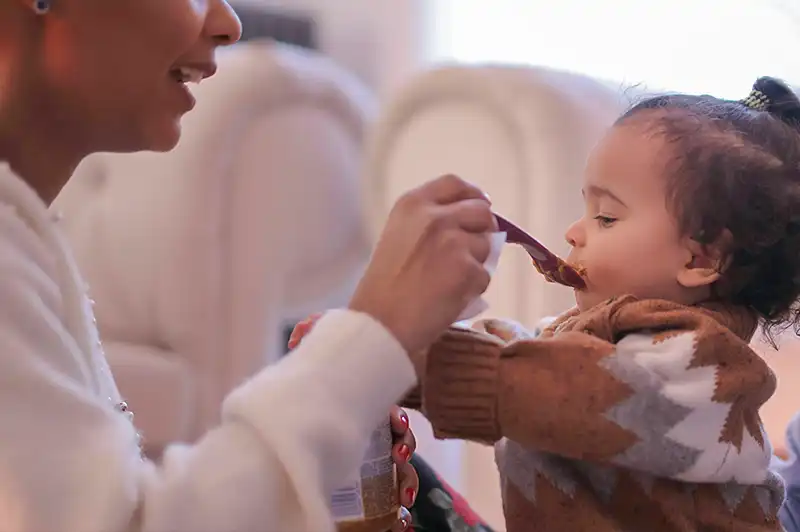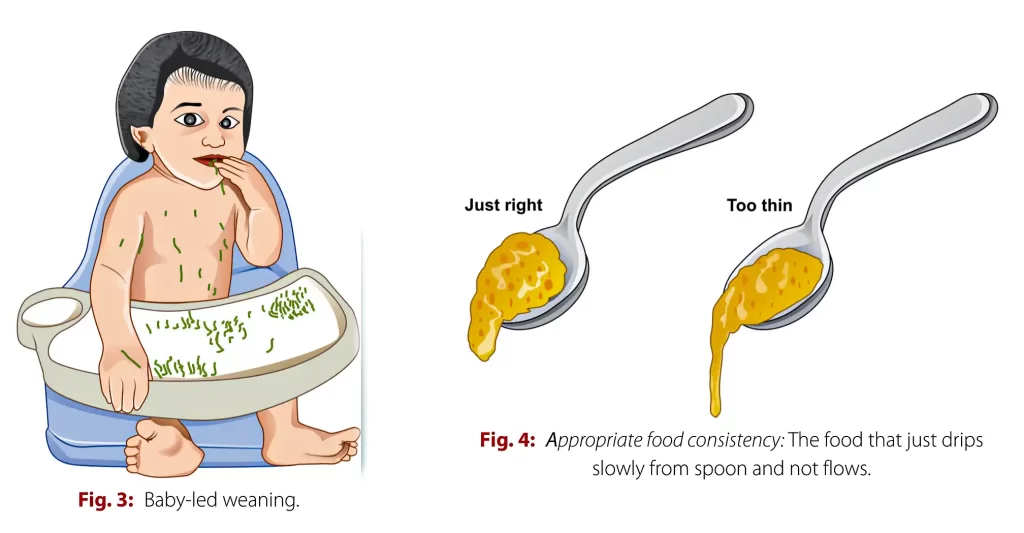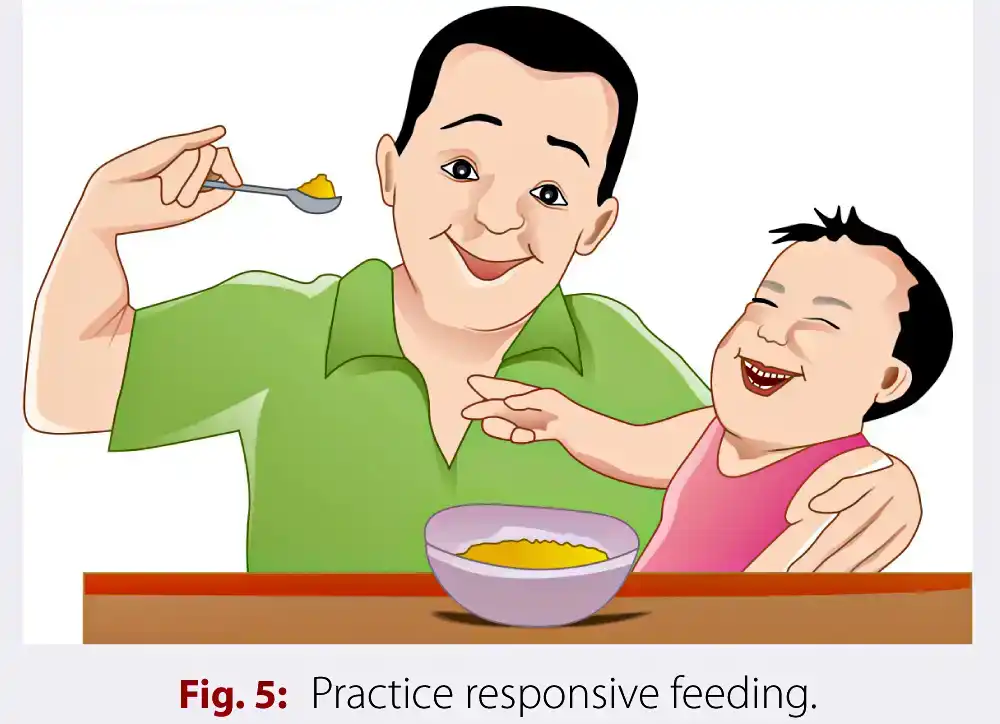
Choosing the Right Foods:
When starting complementary feeding, it’s important to choose foods that are easily available, affordable, and culturally acceptable. Use ingredients that are clean, safe, and easy to prepare. Whenever possible, introduce your baby to the regular family food that’s locally available.
The concept of “Baby-led Weaning” encourages feeding your baby as per their preferences, allowing them to explore and enjoy different textures and tastes. Start with small amounts and gradually increase the quantity as your baby grows.

Safe Food Preparation and Hygiene:
Maintaining hygiene during food preparation is crucial to prevent infections and ensure your baby’s safety. Follow these guidelines:
- Wash your hands thoroughly with soap before preparing and feeding your baby.
- Use clean utensils, cups, and bowls.
- Avoid bottle feeding, as bottles are difficult to clean and can harbor harmful bacteria.
Store perishable foods like meat and dairy in the refrigerator, and reheat them before serving if they’ve been stored for longer periods. Always protect food from contamination by covering it properly and keeping it in a safe place.

Feeding Techniques and Strategies:
As your baby grows, their ability to eat different foods will change. Start with pureed or mashed foods at six months, then introduce “finger foods” around eight months. By the end of the first year, most babies can eat family foods.
Encourage self-feeding by offering small, easy-to-handle pieces of food. Feeding times should be enjoyable, with plenty of interaction between you and your baby. Talk to them, maintain eye contact, and make feeding a positive experience.
Avoid comparing your baby’s eating habits to other children’s, and never force-feed them. Respect their appetite and preferences, and allow them to eat at their own pace.
